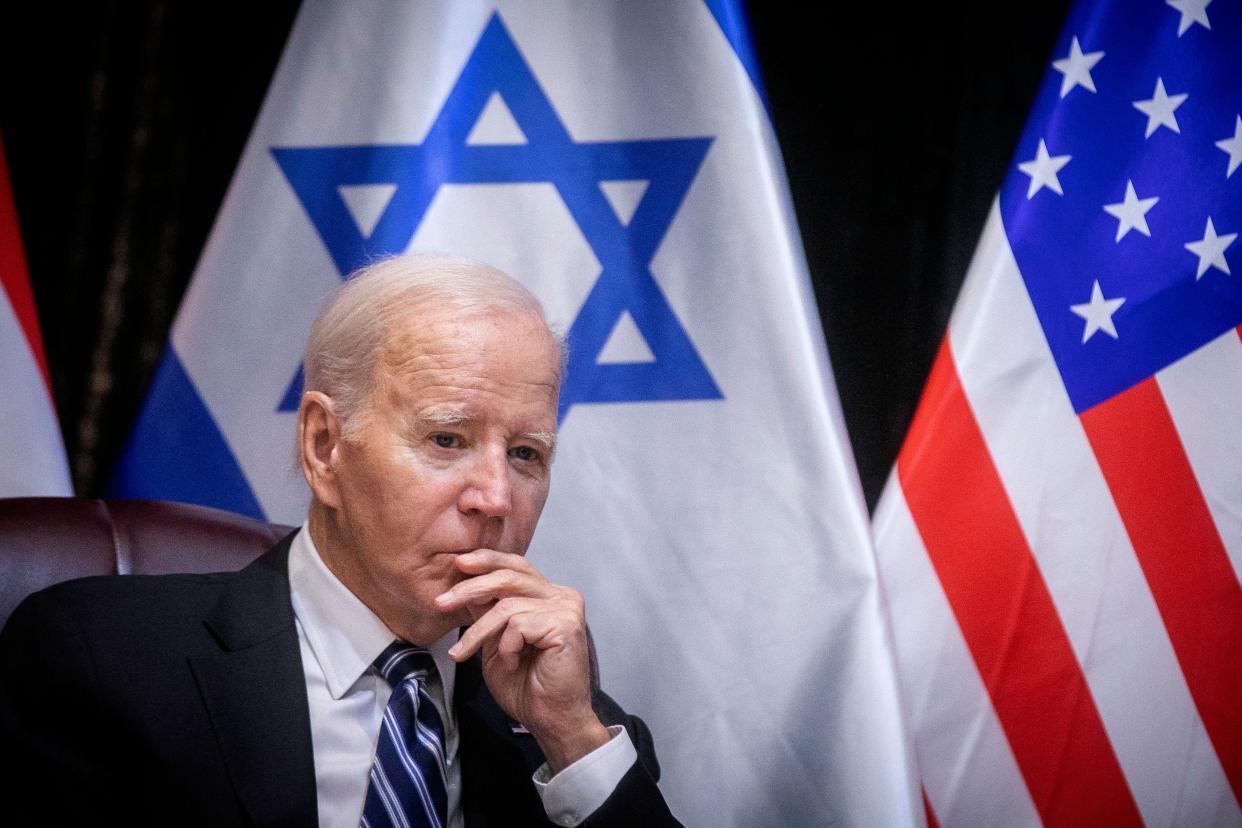US aid to Israel: What to know

- Oops!Something went wrong.Please try again later.
President Joe Biden is planning to ask Congress for more money to support Israel's military response to the Hamas attacks on Oct. 7 that killed more than 1,400 Israelis.
"My administration has been in close touch with your leadership from the first moments of this attack, and we are going to make sure you have what you need to protect your people, to defend your nation," Biden said Oct. 18 during a visit to Tel Aviv.
The White House hasn’t produced a formal proposal yet, which could also include money for Ukraine as it continues its defense against a Russian invasion.
How does U.S. aid to Israel generally compare with aid to other countries? Here’s a closer look:
Israel has consistently received more U.S. aid than any other country. Since the end of World War II, the U.S. has cumulatively provided Israel with almost $318 billion in aid of all types, including military, economic and humanitarian.
That’s about 70% more than the second- and third-place recipients: Vietnam (because of the Vietnam War) and Egypt (to bolster regional security after Egypt signed a peace agreement with Israel in 1979).
Earlier in its history, Israel, which was established as a state in 1948, received significant economic and humanitarian aid along with military aid. However, as Israel has become wealthier, the U.S. has dramatically reduced its economic and humanitarian aid, while continuing its military aid.
The U.S. has given Israel $3 billion to $4 billion a year in military aid during the past decade and a half.
This spending was outlined in a 10-year, $38 billion memorandum of understanding the two countries signed in 2016. The memorandum cited several priorities, including updating the Israeli air fleet and maintaining the country’s missile defense system. Similar memorandums were signed under the George W. Bush and Bill Clinton administrations.
If the new U.S. aid package sends $10 billion to Israel, that will be three times the average annual amount of U.S. military aid to Israel over the past decade and a half.
To provide some context, the amount of military aid sent to Israel every year is less than one half of 1% of the total U.S. defense budget.
Although military aid to Israel has been consistently high, aid to Ukraine has lapped it since Russia’s invasion in February 2022.
Combining military, economic, and humanitarian aid, the U.S. gave Ukraine nearly $78 billion in 2022; about $46.8 billion of that was military aid. That’s significantly larger than the U.S. aid to Israel.
Mark Cancian, a senior adviser with the Center for Strategic and International Studies in Washington, D.C., said the new aid would likely help Israel replace military equipment and munitions. It might also include money that Israel can use to rebuild its military after the conflict, or to repair damaged buildings and infrastructure, Cancian said.
Whether the U.S. will send aid to boost Israel’s economy remains uncertain.
This article originally appeared on Austin American-Statesman: PolitiFact: U.S. aid to Israel: What to know

